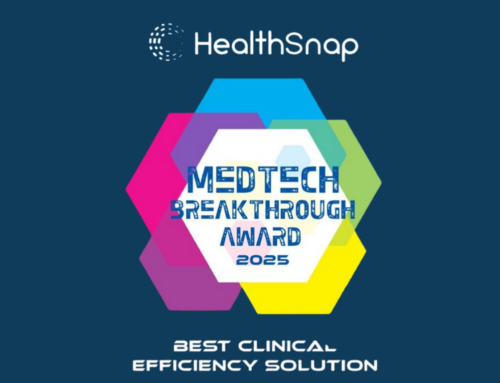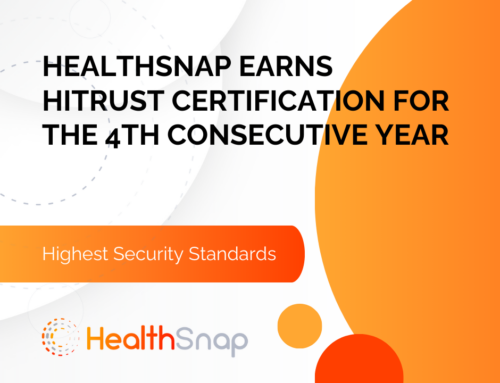Under federal law, the Centers for Medicare and Medicaid Services (CMS) is required to publish an updated fee schedule for healthcare providers every year. The revised rates have to be published in the Federal Register in November, and they go into effect on January 1.
The 2022 Physician Fee Schedule on Remote Therapeutic Monitoring (RTM) codes has major implications for participating providers specializing in physical therapy (PT), occupational therapy (OT), speech-language pathology (SLP), and clinical social work (CSW).
Clinics, independent medical practitioners, and provider organizations involved in delivering these services can potentially claim thousands of dollars in additional reimbursements. In this post, we will review the RTM codes and Medicare reimbursement in 2023 as well as the CPT billing code best practices for Remote Therapeutic Monitoring.
What Are RTM Codes?
Remote Therapeutic Monitoring is a fairly recent addition to Medicare’s arsenal of Current Procedural Terminology (CPT) codes for participating providers. The RTM codes were only added by the CMS to the Physician Fee Schedule in 2022.
After the introduction of the Remote Patient Monitoring (RPM) codes in 2017, this new update represents Medicare’s continued focus on expanding access to health care for Americans through the use of telehealth and other digital tools.
According to the American Medical Association, the arrival of new RTM codes is a sign of the continued evolution of digital health tools. As digital medicine becomes more commonplace, we can expect a parallel evolution in billing practices and RTM codes.
RTM vs. RPM Codes – What Is the Difference?
While Remote Patient Monitoring (RPM) focuses on the collection of physiologic data from patients (blood sugar levels, blood pressure fluctuations, heart rate, and so on), RTM involves the collection of patient non-physiologic data. This can include a wide variety of information, such as:
- Frequency of inhaler use in COPD patients
- Degree of pain felt by patients with musculoskeletal conditions
- Patient adherence to medication schedules
- Patient’s response to therapy/medication
From these use cases, we can easily see some marked differences between RPM and RTM. In Remote Patient Monitoring (RPM), patient data is collected automatically by digital sensors attached to the body. On the other hand, Remote Therapeutic Monitoring data may sometimes have to be manually uploaded by the patient into an app.
While RPM codes are usually used by physicians or other qualified healthcare providers, RTM codes have a broader focus. These general medicine codes are targeted toward other healthcare professionals like clinical psychologists, physical therapists (PTs), occupational therapists (OTs), and speech-language pathologists (SLPs).
RPM is geared towards the constant monitoring of patients with severe/chronic health problems, with the aim of disease management. With RTM, the focus is more on improving patient outcomes through monitoring a treatment/therapy schedule.
A Look at the New RTM Codes From CMS
Remote Therapeutic Management (RTM) has broad applications in the treatment of a wide range of diseases, injuries, and other health issues. However, the latest selection of RTM codes designed by Medicare has a narrower focus.
There are 5 CPT codes from Medicare focused exclusively on Remote Therapeutic Monitoring: 98975, 98976, 98977, 98980, and 98981. These codes were designed to focus on the tracking of the following data:
- Non-physiologic data related to the respiratory system
- Non-physiologic data related to the musculoskeletal system
- Patient adherence and response to therapy
- Patient compliance with prescribed home exercise programs
Broadly speaking, the current CMS definition of RTM codes restricts their scope to patients with illnesses related to the respiratory systems and musculoskeletal diseases or injuries. Let’s take a closer look at all five of the RTM codes.
CPT 98975
The first code focuses on services rendered during the initial phase of Remote Therapeutic Monitoring. CPT Code 98975 is applicable in situations involving the first-time setup of remote monitoring devices. Any efforts expended in patient education on the use of the equipment can also be billed under this code.
A healthcare provider can claim a one-time reimbursement of about $20 per episode of care under this code. Something as simple as sending a home exercise program and other patient education/awareness guidelines via an online platform is a valid case to claim reimbursement.
In this example, eligibility hinges on continuous tracking of the patient for at least 16 days and receiving regular patient updates regarding adherence to the suggested program. Be mindful of this requirement if you plan to claim reimbursement under CPT 98975.
CPT 98976 / CPT 98977
These two codes can be clubbed together under a single section since they are virtually identical, save for one aspect – the condition being monitored. CPT 98976 should be used if you are monitoring a patient’s respiratory system. If the focus is on the musculoskeletal system, CPT 98977 is the appropriate code.
PTs and OTs are more likely to use CPT 98977 since it is directly linked to their specialty. You can claim up to $55 per person per month for RTM under this code. However, do note that one month is taken as a rolling 30-day period.
As for eligible data, providers can collect self-reported data from patients via specialist medical devices, or software as a medical device. This means that you can have your patients send data using their cell phones.
A home exercise program (HEP) software used by the provider will qualify as software as a medical device. If you plan to submit this code to the CMS, it is highly recommended that you fulfill the 16-day monitoring requirement (within a single 30-day period).
CPT 98980 / CPT 98981
The final two codes on RTM are focused largely on managing the collected data. Therapists can claim reimbursement for activities related to monitoring/analyzing the data and discussing the results with the patient.
Use CPT 98980 to cover the first 20 minutes of consultation with the patient in a calendar month. For each additional full 20 minutes spent with the patient, reimbursements will be provided under CPT 98981.
For the first 20 minutes, the reimbursement from Medicare is around $50. Meanwhile, for the additional time spent with the patient, you can expect $40 for each full 20 minutes. The consultations have to be centered on the RTM data to qualify.
How to Start Using RTM Codes in Your Clinic
Home exercise programs (HEPs) for patients are usually an important part of any physical therapy or occupational therapy treatment plan. You would be hard-pressed to find an OT or PT clinic that does not prescribe HEPs. However, the use of RTM is still a relatively new concept in physical/occupational therapy.
With the arrival of these new CPT codes, you now have a compelling monetary reason to invest in a dedicated RTM digital platform. It enables OT and PT clinics to seamlessly provide RTM services to patients and claim Medicare reimbursements under the five CPT codes. Apart from the promise of potentially generating thousands of dollars in reimbursements, a dedicated RTM digital platform also has a few other advantages:
- You can use it to provide your patients with easily accessible exercise plans
- You can effectively track patient adherence to your exercise programs
- You can receive valuable feedback from your patients directly on the platform
The platform also makes it easy for providers to track compliance via a dashboard. Once you log into the system, you can even check how many times your patients have accessed the program to provide updates. And if you have multiple therapists in your clinic, you can even give them all individual access to the virtual care solution for more efficient tracking and monitoring.
You can use this data to back up your claim for reimbursement under RTM. Medicare compliance requirements on these codes only require you to monitor patient adherence via a remote tracking device. A RTM digital platform should be designed to make CPT monitoring compliance as easy as possible for providers.
A Financial Case for Using Remote Therapeutic Monitoring (RTM Codes)
A professional, cloud-based RTM digital platform will come with some ongoing costs, typically in the form of subscription payment for software as a service (SaaS). However, a virtual care platform subscription will generally pay for itself as soon as you start using RTM codes on just a handful of patients.
If you operate a reasonably busy PT or OT clinic, you probably treat many patients every month. With Remote Therapeutic Monitoring (RTM), you can improve the treatment outcomes of all your patients and also earn additional revenues from CMS reimbursements.
Let’s take a look at the costs vs. benefits of using RTM codes on a single patient in a physical therapy clinic through this hypothetical example:
Step 1 – Initial Setup of RTM
On day one, you evaluate the patient and decide the appropriate treatment protocols and home exercise programs. Once you onboard the patient onto your RTM digital platform, you can use CPT code 98975 to claim $20 per patient for the initial setup.
Quite naturally, you also have to document the entire initial setup process in order to claim reimbursement. Moreover, you cannot claim under CPT 98975 until you have completed 16 days of monitoring said patient. This takes us to the second step, a few weeks later.
Step 2 – Track Progress and Submit Multiple RTM Codes
Once you have completed 16 days of active monitoring of the patient’s HEP, it is ideal to create a summary of the tracking data and a progress note. You can probably do this anytime between day 21 and day 30, but the earlier the better.
After you satisfy the requirements for CPT 98975, you can submit the code to CMS for a $20 reimbursement. Concurrently, you can also submit CPT 98977 for tracking and reviewing therapeutic data. This is possible since you have already collected and reviewed the data for 16 days. Now, you have another $55 additional reimbursement.
On top of that, if you take the time to review the data, make any changes to the therapy plan, and communicate the same to your patient, you can submit CPT code 98980 and claim another $50 for 20 minutes of consultation.
In your first 30 days with RTM, you can bill the CMS an additional $125 ($20+$55+$50) under CPT codes 98975, 98977, and 98980. And it does not stop there. In the second month, you can still continue claiming close to $100 by using codes 98977 and 98980 for continued tracking and reviewing of patient adherence to the HEP.
Within your first two months with a single patient, you could claim $225 with an RTM digital platform under the CPT codes. If you have 10 regular patients in your physical therapy clinic, you can claim $1250 each month from Medicare – all it requires is a reliable digital RTM platform and some time to track patient HEP adherence.
For larger clinics with more therapists, the potential financial impact can be quite massive indeed.
Best Practices in RTM Coding and Billing
The CPT coding system allows participating providers to generate a significant portion of revenues via Medicare reimbursements. For the sake of transparency and fraud prevention, the coding and billing process has stringent compliance requirements.
Creating a proper internal process for full compliance in medical coding and billing for Remote Therapeutic Monitoring (RTM) can be a daunting task indeed. There are many factors, both minor and major, to keep in consideration.
For instance, what is an acceptable collection ratio? How often is too often when it comes to something as simple/routine as billing your patients? To find answers to these questions and more, we looked at the performance data from some of the top-ranked healthcare providers participating in CMS.
We discovered a series of best practices that any provider can use to optimize their CPT coding and billing process for greater efficiency and compliance. They include the following:
Create a Patient-Friendly Medical Billing Process
For the average layperson, the medical billing process can be an incredibly confusing and intimidating task. That was ok in the past – it was expected that only those who worked inside the system knew how to make sense of a medical bill statement. But those days are long gone – accessibility is more important than ever before. Patients can and will switch to providers who offer a more accessible billing system.
Aim for a Claim Rate Above 95%
In CMS reimbursements, a claim ratio is the average number of claims paid out to a medical practice on the first submission. Trying to keep denials as low as possible is a best practice – for each denial, your staff will have to spend extra time to find the reason, rectify it, and re-submit the claim. Practices with higher claim rates spend less valuable time on resubmissions.
Be on the Lookout for Underpayments
Don’t expect full reimbursements on every claim you make – payers often make partial payments, for myriad reasons. Dedicate some resources to analyzing such payer reimbursements and revenue losses from underpayments. It will help minimize future losses and you will also gain valuable insights into your revenue management.
Focus on Cash Flow and Accounts Receivable
Even medical practices have to follow established best practices in day-to-day operations and financial management. Keep an eye on all your receivables and don’t wait until the last moment to respond to denied claims. Always try to ensure a stable and predictable cash flow for an optimal revenue cycle.
Put Extra Effort Into Maintaining Claim Accuracy
An estimated 80% of all medical bills contain common and avoidable errors, including wrong patient insurance data and duplicate claims. Left unaddressed, these can result in denied claims, wasted time, and allocation of precious resources for resubmission. With more accurate and efficient billing and correct code, you can save a lot of time and money.
Be Mindful of Updates/Changes to Billing Rules and Regulations
The CMS makes annual updates to its codes and other regulations. For best results in billing and coding, it is vital that providers keep themselves informed about the recent changes in the rule. Failure to stay up to date will result in increased rejections and lower claim rates, leading to a negative effect on your cash flow.
Improve Your Medical Billing & Coding with These 8 Essential Metrics
Performance tracking through relevant metrics and key performance indicators (KPIs) is essential for any business looking to improve its efficiency and revenues. With a careful selection of KPIs and metrics, you can gain valuable insights into your practice’s finances and related aspects. Here are the 8 vital KPIs for hospitals/clinics seeking to improve their medical billing processes:
1. Net Collection Rate
This metric measures the money you receive against what is owed to you for services provided by the physical therapists in your clinic. It is a vital indicator of the efficiency of virtually all parts of your practice:
- Your ability to provide a valuable service to patients and payers
- Your efficiency in managing revenue cycles and billing operations
- Your ability to spot and address problematic trends among patients and payers
- Your ability to quickly follow up on non-payment issues
2. Average Days in Accounts Receivable (A/R)
This metric tells you the average number of days it takes for your physical therapists to collect what is owed after the first meeting with a patient. It can tell you a lot about the general efficiency of your claims process. It could also warn you about potential issues at the payer’s end.
3. Collections Per Visit
For physical therapists (and any other healthcare provider for that matter), some types of treatments/appointments pay more towards revenues than others. This data will tell you which appointments are more profitable for your practice, allowing you to optimize your scheduling system to improve revenues.
4. First Pass Resolution Rate (FPRR)
A high FPRR rate means that your practice does not have a major issue with denied or rejected claims. The ideal figure is above 95% – if it is much lower than that, you have serious problems in your medical billing and coding process.
5. Contractual Variance
This metric tells you whether your payer is reimbursing in accordance with the contracted rates. If they are not, you could be getting underpaid for services rendered. Always pay close attention to this KPI – a high variance could be a sign of an internal issue or poor relationship with the payer.
6. Denial Management
Billing errors and claim denials that stem from them (and other coding errors) are inevitable in any practice. The important thing is to have a proper denial management system in place when the inevitable happens. It helps streamline the resubmission process and improve future optimization.
7. Monthly Receipt Documentation
Financial performance tracking is greatly augmented when you have month-wise data for all your receipts. Apart from improved visibility of your financial situation, this also allows you to isolate areas in your practice that could use some optimization.
8. Year-End Reviews of All Metrics
Along with routine quarterly AR reports and reviews, conducting thorough year-end reviews of all the metrics listed here can give you a comprehensive look at the current state of your practice in medical billing and coding. It is the best way to identify problem areas and improve your overall efficiency.
HealthSnap’s virtual Care Management Platform
The HealthSnap virtual care management platform is helping transform access to affordable and high-quality care for all. Our remote monitoring solutions are helping healthcare providers improve patient outcomes while simultaneously improving claim rates in CMS reimbursements.
HealthSnap’s integrated virtual Care Management Platform helps healthcare organizations improve patient outcomes, reduce utilization, and diversify revenue streams. From chronic disease-agnostic Remote Patient Monitoring (RPM) and Chronic Care Management (CCM) to AI-guided care coordination, virtual care delivery, automated care management billing, population analytics – and so much more, HealthSnap is the simplest way to manage chronic conditions remotely.
For more information about our virtual care management solutions and their impact on your revenues, patient satisfaction rates as well as medical billing and coding processes, give our team a call at 888-780-1872, or use this online form on our Contact Us page.






